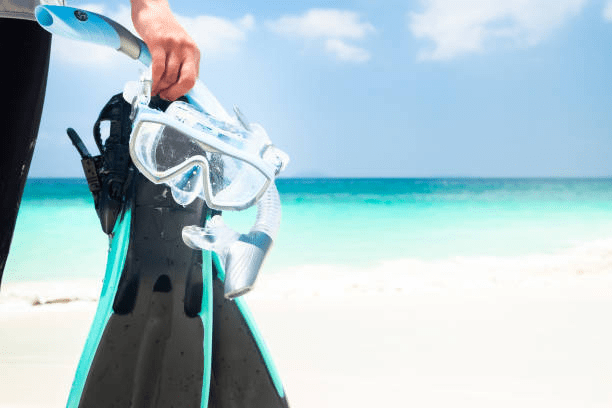Swimming is a highly rewarding and refreshing exercise that engages nearly all the muscles in your body while providing a low-impact workout. To make the most of your swimming experience, it’s essential to have the right swimming equipment. Whether you’re a casual swimmer or a competitive athlete, having the proper gear can enhance your performance, safety, and overall enjoyment in the water. In this article, we’ll explore the essential swimming equipment you need for a successful swim.
1. Swimsuits:
A good swimsuit is the foundation of your swimming gear. The right swimsuit should fit comfortably and allow for unrestricted movement. Swimsuits come in various styles, including one-piece suits, two-piece bikinis, swim trunks, and jammers (for men). When selecting a swimsuit, consider the type of swimming you’ll be doing. Competitive swimmers often opt for sleek, form-fitting suits designed to reduce drag, while recreational swimmers may prioritize comfort and style.
2. Goggles:
Goggles are a must-have swimming accessory that protects your eyes from chlorine and other irritants in the water. They also improve visibility underwater, allowing you to see clearly while swimming. When choosing goggles, look for a pair that fits snugly without being too tight and offers anti-fog and UV protection. Different styles, such as racing goggles, training goggles, and recreational goggles, cater to various preferences and swimming activities.
3. Swim Caps:
Swim caps serve multiple purposes in the pool. They help keep your hair out of your face and reduce drag in the water. For competitive swimmers, swim caps are a standard part of their gear. They also make you more visible in the water, which is crucial for safety in open water swimming or crowded pools. Swim caps come in various materials, including latex, silicone, and Lycra, so you can choose the one that suits your needs and comfort preferences.
4. Ear Plugs and Nose Clips:
If you’re prone to ear infections or want to keep water out of your ears, consider using earplugs designed for swimming. Nose clips can help prevent water from entering your nose, especially if you’re learning or practicing specific strokes like the butterfly.
5. Kickboards:
Kickboards are excellent tools for swim training. They provide buoyancy to your upper body, allowing you to focus on developing your leg strength and kicking technique. They’re commonly used in swim lessons and training sessions to improve your flutter kick or dolphin kick.
6. Pull Buoys:
Pull buoys are foam devices that you place between your thighs to provide buoyancy to your lower body. They help you focus on building upper body strength and arm technique while isolating your legs. Pull buoys are valuable for swimmers looking to improve their arm strokes or for those recovering from lower-body injuries.
7. Hand Paddles:
Hand paddles are flat, plastic or rubber devices that you wear on your hands during swimming. They increase resistance in the water, making your arm strokes more challenging and efficient. Hand paddles are commonly used by competitive swimmers to build strength and improve stroke technique.
8. Fins:
Swim fins are designed to be worn on your feet and can enhance your kick strength and overall swimming speed. They come in various shapes and sizes, with longer fins providing more propulsion and shorter fins offering greater control and technique refinement. Fins are used for various training purposes, including sprinting, endurance, and stroke development.
9. Snorkels:
Swim snorkels are a valuable training tool for swimmers. They allow you to breathe while keeping your face in the water, which is especially useful for practicing stroke technique and body position. Snorkels help swimmers focus on their strokes without the interruption of needing to turn their head to breathe.
10. Swim Bags:
A swim bag is a practical accessory for carrying all your swimming gear to the pool or open water location. Look for a bag with multiple compartments to keep your wet and dry items separate. Some swim bags also come with waterproof compartments to protect your electronics and personal items.
11. Waterproof Watches:
Waterproof watches designed for swimmers offer features like lap counters, stroke rate tracking, and interval timers. They can help you monitor your performance and track your progress during training sessions.
12. Personal Flotation Devices (PFDs):
For open water swimmers, especially those swimming in areas with boat traffic, a personal flotation device (PFD) can be a lifesaving piece of equipment. PFDs provide extra buoyancy and make you more visible to boaters. Choose a PFD designed specifically for open water swimming, as they offer freedom of movement and comfort.
13. Swim Training Aids:
Various training aids are available to help swimmers improve their technique and stamina. These include drag socks, ankle bands, and swim parachutes, all designed to increase resistance in the water and challenge your strength and speed.
14. First Aid Kit:
Safety should always be a top priority. Consider keeping a small first aid kit in your swim bag, especially for open water swims. It should include items like adhesive bandages, antiseptic wipes, and any personal medications you may need.
15. Sun Protection:
If you’re swimming outdoors, don’t forget sun protection. Apply waterproof sunscreen to exposed skin and wear a wide-brimmed hat and sunglasses with UV protection to shield your eyes from the sun’s harmful rays.
In conclusion, the right swimming equipment can significantly enhance your swimming experience, whether you’re a novice or an experienced swimmer. Choosing the appropriate gear for your swimming goals and environment is essential for comfort, safety, and performance. So, gear up, dive in, and make the most of your time in the water with the right equipment by your side.





